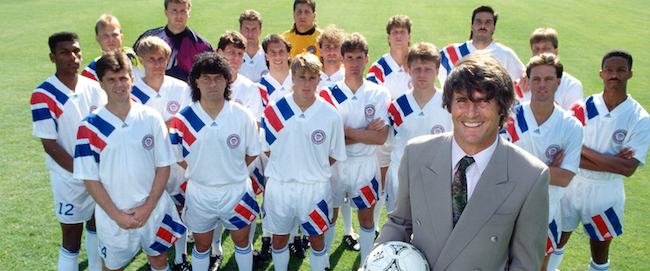
It does seem strange to apply the label “the original” to something that happened only 30 years ago, but it’s appropriate here. When U.S. fans use the phrase dos á cero to celebrate success against Mexico, they tend to list three World Cup qualifiers in Columbus and a World Cup game in Korea, all of them in the last 20 years, as the instances of this. The United States’ 2-0 upset of Mexico in the semifinals of the 1991 CONCACAF Gold Cup seems to have been largely forgotten by many of those who hail more recent victories, but it was the game that started to turn this rivalry around, or at least turn what had been a one-sided competition into an even one.
For the United States to beat Mexico in a competitive situation like this seemed astonishing. Going into the 1991 CONCACAF Gold Cup, the Americans’ record over the years against Mexico was two victories, 22 defeats and four ties. Even the two United States victories were less than impressive. One had taken place 57 years earlier, before Mexican soccer really picked up steam. The other was in a meaningless 1980 game.
This was the first CONCACAF Gold Cup. The United States was placed in a first-round group with Guatemala, Trinidad and Costa Rica, the winner and runnerup of which were to advance to the semifinals. The Americans got through the group with three straight wins, but not without some trouble. They beat Guatemala in their opener, 3-0, but Trinidad employed a bunker-and-counterattack strategy against them five days later that almost succeeded. Trinidad led, 1-0, in the 85th minute before the Americans pulled out a win on late goals by Bruce Murray and Marcelo Balboa. Balboa’s goal and an earlier one by Trinidad’s Leonson Lewis both came on bicycle kicks. The game against Costa Rica was mostly about seeding, as both teams had clinched places in the semifinals, and the United States gained a 3-2 win on Hector Marchena’s own-goal in the 59th minute. That game was part of an unusual event, a quadrupleheader. Four first-round games were played, one after another, in a 10-hour program at the L.A. Coliseum.
The semifinal against Mexico drew a crowd of 41,103 at the Coliseum, and most of them left shaking their heads after seeing a team that had served as a punching bag for Mexico for decades turn the tables on its neighbor. The result came as such a shock to the losers that Mexican coach Miguel Lapuente resigned in disgrace. Lapuente became the first of a string of Mexican coaches whose heads rolled after poor results against the United States. Ironically, one of those, seven years later, was the man who was the winning coach on this night, Bora Milutinovic.
The Americans took some time to get going. The American attack didn’t produce much until after some halftime adjustments, but the first goal then came quickly, in the 48th minute. As midfielder Hugo Perez floated an angled free kick into the Mexican penalty area, goalkeeper Pablo Larios came off his line but didn’t get the ball. Balboa outleaped a defender to head it on to John Doyle at the far post for a shot into an open net. In the 64th minute, Peter Vermes gave the Americans some breathing room with a beauty of a goal. He took a pass from Fernando Clavijo, broke free from two defenders outside the penalty area and hooked a shot over Larios into the net.
Two days later, the United States won the cup by beating Honduras on penalties after a 0-0 tie. The final was anticlimactic for both exhausted teams, although Vermes did nearly break the tie in overtime with a header that the goalkeeper barely turned over the bar. Honduras had scored an upset of its own in the semifinals by beating Costa Rica, which had reached the final 16 of the World Cup the year before.
With this tournament, Milutinovic set a precedent that his successors Steve Sampson, Bruce Arena and Bob Bradley each followed, with significant tournament runs early in their tenure as U.S. national team coach.
A version of this article originally appeared at Roger’s Big Soccer blog on Sept. 19, 2011
